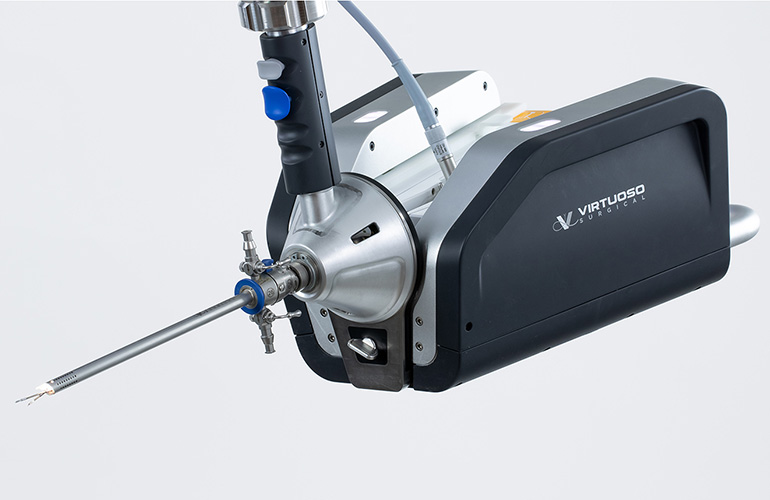Left, William Grissom, and right, Robert Webster, the lead researchers on the project. | Source: Case Western Reserve University, Vanderbilt University
There have been about 299,010 new cases of prostate cancer in the U.S. so far this year, according to the American Cancer Society. In total, one in eight men will be diagnosed with prostate cancer throughout their lifetime, making it a pressing issue for physicians.
Researchers at Case Western Reserve University and Vanderbilt University are pioneering a new approach to prostate cancer surgery by combining advanced robotics and “low-field” MRI technology.
They are working to enable highly accurate, patient-tailored prostate cancer surgeries without the need for traditional incisions. The researchers said their innovation is a major step to developing minimally invasive treatments for prostate cancer and could improve both safety and efficiency for patients.
William Grissom, a professor at the Case Western Reserve School of Medicine and Case School of Engineering; and Robert Webster, the Richard A. Schroeder Professor of Mechanical Engineering at Vanderbilt University, are leading the collaboration.
“Our goal is to eliminate the many complications associated with whole-gland prostate removal to treat prostate cancer,” Grissom said. “Targeted removal of localized prostate lesions could alleviate these complications but is challenging because cancerous tissue can appear identical to healthy tissue in endoscopic images, making accurate surgery difficult.”
Researchers integrate tech to address prostate cancer
Grissom and Webster will work to adapt a robot from Virtuoso Surgical Inc., a Vanderbilt startup company Webster founded, to remove prostate cancer lesions. They will integrate the robot with Promaxo Inc.’s low-field MRI scanner, which, unlike transrectal ultrasound, can image the prostate without blocking surgical access to the lesions.
“The new robot will be able to carefully guide surgical instruments directly to prostate cancer lesions identified in high-field MR images,” said Webster. “This will enable surgeons to focus treatment on specific cancerous lesions.”
The project is being funded by a new five-year, $3.7 million grant from the National Cancer Institute, part of the National Institutes of Health (NIH). In addition to securing the NIH grant, Grissom was recently appointed Case Western’s first Medtronic Professor of Biomedical Discovery and Innovation for his work in the field.
Virtuoso says its system’s needle-sized robotic arms enable surgery in some of the hardest-to-reach areas of the body. | Source: Virtuoso Surgical
Virtuoso Surgical miniaturizes manipulation
Virtuoso Surgical offers an endoscopic surgical system that it claimed can replace straight tools in almost any rigid endoscopic procedure and enable the surgeon to grasp, manipulate, and cut tissue with greater dexterity than current rigid endoscopy. The system delivers two robotically controlled, needle-sized manipulators that work from the tip of a rigid endoscope less than half the diameter of a U.S. dime.
The Nashville, Tenn.-based company said the system reduces the need for awkward and potentially dangerous endoscope movements. It added that it enables surgeons to manipulate tissue as though their hands were inside the body.
Each needle-sized manipulator is made from curved nitinol tubes that controllably bend as they twist and telescopically extend.
Virtuoso has designed manipulators that are many times smaller than other robotic surgical instruments. The company said this allows the surgeon to fit tools into previously unreachable areas of the body and paves the way for new therapies, all through a single port that is less than 1 cm (0.3 in.) in diameter.

 1 month ago
17
1 month ago
17











 English (US) ·
English (US) ·